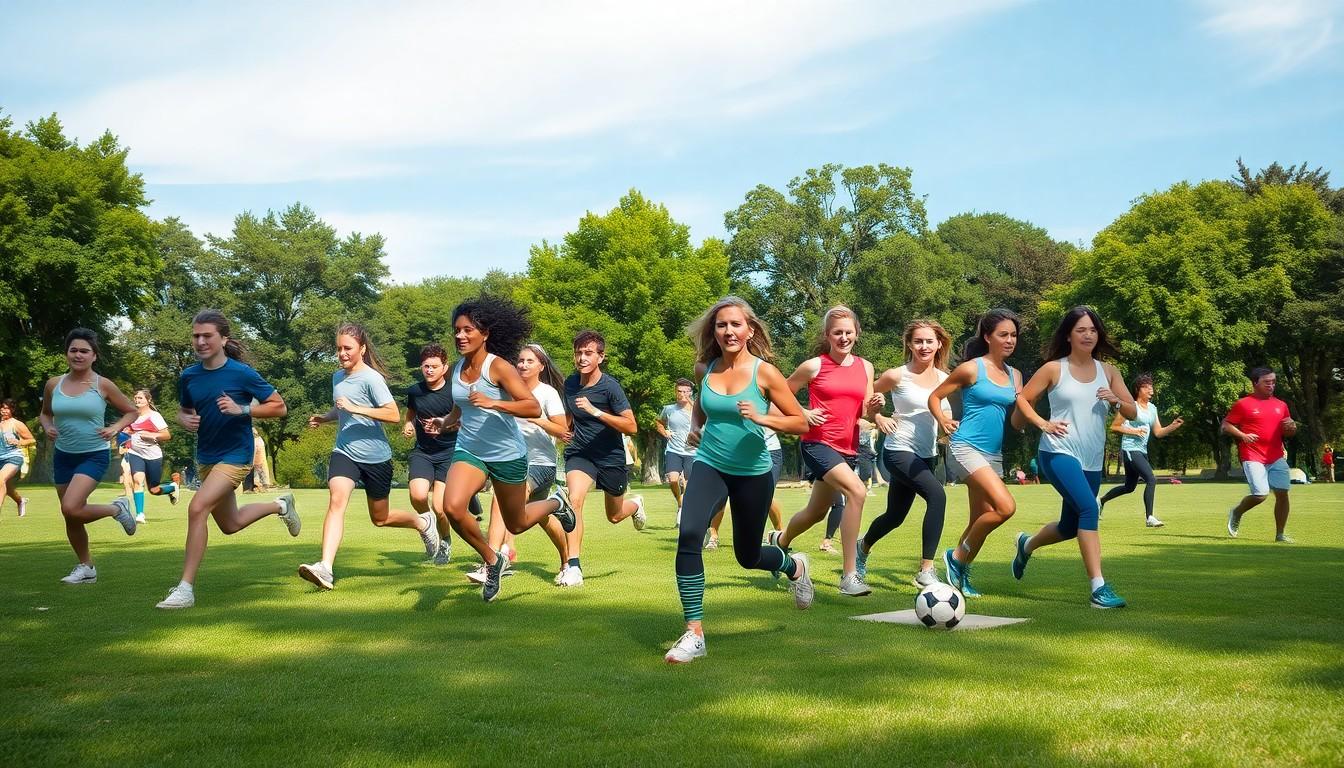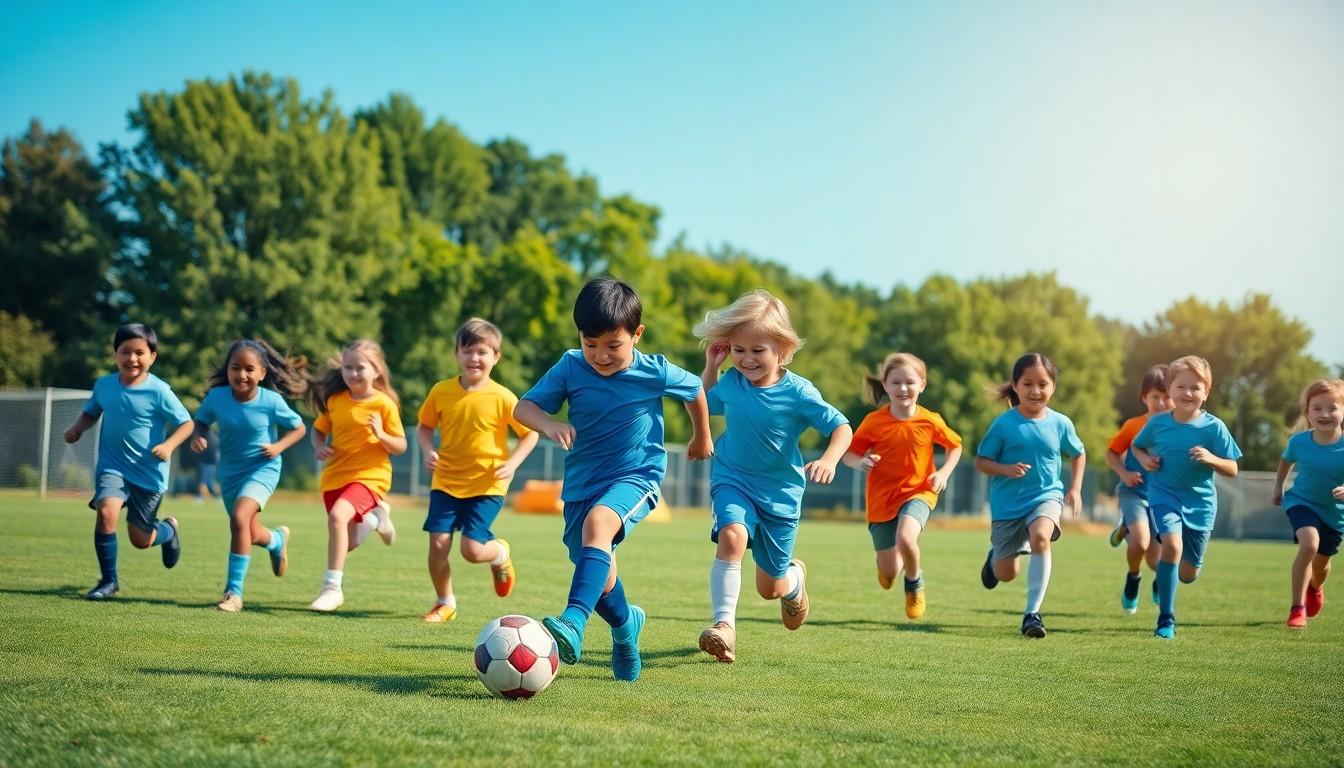In a world where couch surfing is a competitive sport, physical culture and sports stand as the ultimate antidote to a sedentary lifestyle. It’s not just about breaking a sweat; it’s about embracing a vibrant, active life that can transform not only bodies but also minds. Imagine trading those Netflix marathons for actual marathons—your body will thank you, and your couch will still be there waiting for you.
From the thrill of competition to the camaraderie of team sports, physical culture offers a smorgasbord of benefits that extend far beyond the gym. It’s about building resilience, fostering friendships, and maybe even discovering a hidden talent for dodgeball. Dive into the world of physical culture and sports, where every leap, sprint, and stretch is a step toward a healthier, happier you.
Physical Culture And Sports
Physical culture embodies a holistic approach to health and well-being through activities aimed at enhancing fitness. Sports serve as a vital component within this framework, encouraging individuals to participate in structured physical activities. Engaging in sports promotes not only physical endurance but also mental health benefits, making it crucial for a balanced lifestyle.
Communities often foster a sense of belonging through organized sports teams. This involvement nurtures friendship and collaboration among participants. Shared experiences during competitions and practices can lead to lifelong bonds and support networks.
Participants often showcase resilience through sporting challenges. Overcoming adversity on the field translates to improved confidence in other life areas. Physical culture encourages individuals to set personal goals and strive for excellence, ultimately leading to self-discovery and personal growth.
Experts suggest that regular engagement in physical activities can significantly reduce the risk of chronic diseases. Studies found that individuals who practice sports experience lower levels of stress and anxiety. In addition, physical fitness is linked to enhanced cognitive function, further benefiting personal and professional pursuits.
Routine participation in physical culture plays a critical role in combating sedentary behavior. Replacing passive entertainment with active engagements reaps numerous health advantages. Every individual can contribute to a more active society by prioritizing movement and exercise.
Overall, the integration of physical culture and sports into daily life fosters well-rounded individuals. Active lifestyles cultivate not only physical attributes but also psychological resilience. Such an approach leads to improved well-being, enriching individual lives and the community as a whole.
Historical Development

Physical culture and sports have evolved significantly over time, reflecting changes in society, health understanding, and recreational practices. Their origins date back to various cultures, each contributing unique elements to the foundation of modern physical culture.
Early Traditions
Ancient civilizations valued physical activity, often intertwining it with cultural and religious practices. Greeks emphasized fitness through the Olympic Games, showcasing prowess in athletics, wrestling, and combat sports. Similarly, the Chinese practiced martial arts aimed at enhancing physical and mental discipline. Many indigenous cultures also participated in games, which not only promoted fitness but also emphasized community and celebration. These early traditions established a belief in physicality as integral to human experience.
Modern Evolution
The 19th century marked a turning point in the organization and perception of sports. The establishment of formalized sports clubs created a structured environment for competition. Subsequently, the introduction of structured training programs reflected a growing understanding of physical fitness as a component of overall health. The late 20th century saw the rise of professional sports, increasing both visibility and engagement in physical culture. Technological advancements further contributed to the accessibility of various sports, encouraging broader participation. Modern health initiatives now advocate for regular physical activity, emphasizing its role in combating sedentary lifestyles.
Importance Of Physical Culture And Sports
Physical culture and sports offer substantial benefits that extend beyond mere enjoyment. Engaging in regular physical activity fosters overall well-being.
Health Benefits
Regular participation in physical culture significantly reduces the risk of chronic diseases. It improves cardiovascular health, enhances muscular strength, and boosts overall fitness levels. Mental health also sees marked improvement through reduced anxiety and stress. Cognitive function improves as well, leading to better focus and memory retention. Exploring various sports encourages individuals to find activities they enjoy, promoting long-term adherence to active lifestyles. Pursuing fitness through sports builds resilience, with participants facing and overcoming various challenges.
Social Impact
Physical culture and sports play a crucial role in strengthening social connections. Organized sports cultivate teamwork, enhancing communication skills among participants. Friendships often blossom from shared experiences, fostering a sense of belonging. Community engagement thrives as local sports events draw participants together. Cultural inclusivity enhances understanding as diverse backgrounds come together for common interests. Collaboration through sports builds cooperation and mutual respect. Moreover, youth involved in sports tend to exhibit improved leadership skills. Engaging in physical activities also promotes intergenerational bonds, bringing various age groups together.
Types Of Physical Culture And Sports
Physical culture encompasses a wide range of activities that enhance health and well-being through structured exercises and sports. Engaging in various forms of sports contributes to a more active lifestyle.
Individual Sports
Individual sports focus on personal skill and performance, encouraging self-reliance and discipline. Popular examples include swimming, running, and tennis. Participation in these activities allows individuals to set personal goals, track progress, and develop resilience. Through individual sports, athletes can enjoy solitary training sessions while still benefiting from the competition. Training alone often fosters a strong sense of achievement and self-motivation. Strengthening one’s abilities in individual sports can lead to improved physical fitness, mental clarity, and increased confidence.
Team Sports
Team sports emphasize collaboration and group dynamics, promoting camaraderie among participants. Sports like soccer, basketball, and volleyball require effective communication and teamwork for success. Engaging in team sports teaches valuable life skills, such as cooperation, leadership, and accountability. Developments in interpersonal relationships often occur during practice and competition, fostering bonds that extend beyond the field or court. Participation in team sports also contributes to a sense of belonging, encouraging social connections and community involvement. Overall, teamwork in sports enhances physical performance while enriching the social fabric.
Challenges Facing Physical Culture And Sports
Physical culture and sports face several significant challenges that hinder growth and participation. Addressing these obstacles is essential for fostering a more active society.
Accessibility Issues
Access to physical culture and sports remains a critical concern. Many communities lack adequate facilities, which limits participation opportunities. Economic barriers also prevent individuals from affording memberships or equipment. Transportation challenges further complicate participation, particularly in rural areas. Schools often struggle to provide quality athletic programs or resources. Ensuring equitable access to sports for all, regardless of background, promotes a healthier society.
Environmental Concerns
Environmental factors increasingly impact physical culture and sports. Urbanization often leads to the decline of green spaces, decreasing available areas for outdoor activities. Pollution affects both air quality and overall health, creating risks for outdoor sports participants. Climate change introduces unpredictable weather patterns, disrupting training and events. Additionally, inadequate infrastructure for biking, walking, or running discourages physical activity. Addressing these environmental issues supports a culture that values wellness and active lifestyles.
Future Trends In Physical Culture And Sports
Emerging trends in physical culture and sports indicate a significant transformation in how individuals engage in physical activities.
Technological Innovations
Technology influences participation by enhancing training methods and improving access. Wearable fitness devices track performance metrics, encouraging users to reach health goals. Virtual and augmented reality provide immersive experiences, making workouts more engaging. Online platforms connect athletes with coaches, offering personalized training from anywhere. Esports continue to gain traction, blending physical activity with competitive gaming, attracting diverse audiences. These innovations provide valuable data, empowering athletes to optimize their performance and recovery.
Inclusion And Diversity
Inclusion and diversity shape the future of physical culture and sports. Initiatives promote participation from underrepresented groups, breaking down economic and social barriers. Adaptive sports enhance opportunities for individuals with disabilities, fostering independence and confidence. Community programs aim to create safe spaces for all participants, regardless of age or background. Diverse representation in sports creates role models, inspiring future generations. Emphasizing cultural competency enriches team dynamics, enhancing understanding and cooperation among athletes from varying backgrounds.
Embracing physical culture and sports is essential for fostering a healthier and more connected society. By prioritizing active lifestyles individuals can unlock a myriad of benefits that enhance both physical and mental well-being. The journey through sports not only builds resilience and confidence but also nurtures friendships and community ties.
As technology continues to evolve and accessibility improves the potential for widespread participation grows. Addressing the challenges that hinder engagement will pave the way for a more inclusive environment where everyone can thrive. Ultimately the commitment to physical culture and sports serves as a powerful catalyst for personal growth and societal improvement.

